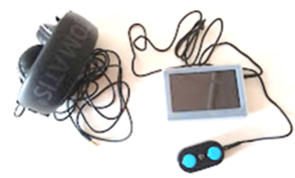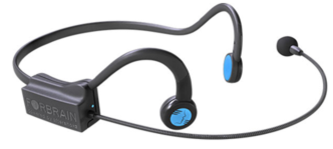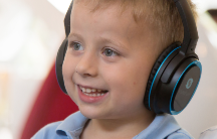Motor-Sensory Integration (MSI)
“Until the brain reaches about the age of 7, the brain is primarily a sensory processing machine. This means that it senses things and gets meaning directly from sensations. A young child doesn’t have many abstract thoughts or ideas about things; he is concerned mainly with sensing them and moving his body in relation to those sensations. His adaptive responses are more muscular or motor than mental. Thus, the first 7 years of life are called the years of sensorimotor development.” (Ayres 2005).
Ideally everyone experiences MSI at around 7 or 8 years of age, and from there on can use all their senses and motor skills together to solve problems and navigate the world. However, this does not always happen for a variety of reasons, many of which relate to our modern lifestyles.
At Fit 2 Learn we assess people for motor-sensory integration and find that teaching people to achieve and maintain good MSI enables them to function fully and calmly in modern society. MSI aids efficient learning and good physical and mental health.

Breathing and Heart Rate Variance
In order for any human to come to a calm state they need to be able to control their breathing and heart rate variance.
That is a serious skill and requires an understanding of precisely how a person needs to:
Breathe nasally
Achieve a coherent heart rate variance
Use strategies to stop those around them dysregulating their heart rate variance & breathing
Maintain and master postural control skills to prevent blocks to good breath hygiene
Be alert to sound or vision processing factors that might impact on breathing and heart rate variance.
Calm coherent thought is a real skill that starts with coherent breathing and heart rate variance in order to calm body & brain.
Helpful Videos
Motor Skills Development & Maintenance
Humans have a very delicate, but adaptable frame that should work well together, but often does not. There are various reasons for this such as:
Infants miss steps in their development which then go on to cause problems for life if not addressed.
Modern environments cause people to adopt strange postures that damage and unbalance their motor skills.
Problems with sound and vision processing can impact on motor skills and postural control. Conversely, motor skills can impact on sound and vision.
In order to address motor skills issues it is helpful to check the following:
Primitive reflexes to ensure these have all been fully integrated. These are automatic muscle movements we make as infants in order to come out of the birth canal and to transition from helpless to crawling to walking. Eventually, we all need to have full conscious control of all of our muscles.
Bi-lateral integration of motor skills, this is the completely efficient working of left and right sides of the body. When the body left and right is not well integrated it can cause problems with involuntary overflow gestures that can trap nerves and cause adverse side-effects; also it impacts on spatial and conceptual understanding.
Postural control, this is full control of the spine from head to tail so that it is fully supported by muscle systems and does not put any undue pressure on the nervous system that runs its length.
Fine motor skills control in face, feet and hands so that the body can make the finest of movements.


Helpful Videos
Sound Processing
Sound processing is the ability to make sense of what we are hearing. People can hear, but still have problems with sound processing. At Fit 2 Learn we work with Tomatis technology www.tomatis.com to assess people’s sound processing and to change sound processing so that people can make as full a use as possible of their skills.
Sound is our first myelinated sense. We start hearing before we are born and we go on developing sound processing skills throughout life. Sound is our first alarm system, we are hearing even when we are asleep.
Within the inner ear is the vestibular system which connects the ear and sound processing to the whole body. This is significant because changes to sound processing can impact on global development.
It is sensible for everyone to screen for sound processing during their lives.
For example, at the following ages:
Infancy when there are obvious problems with a child’s development.
7 years old to ensure that sound processing is working efficiently at the end of infancy and the start of formal education. It is quite common for children to experience undetected sound processing issues which a few rounds of sound therapy can address leaving the child fit to access all aspects of sound processing so that they can speak and read their own language well, learn foreign languages and access all aspects of music.
Late adolescents to ensure that growth and sundry infections have not affected sound processing skills and that they are fit to learn for the intensive demands of higher education and careers.
Throughout middle life it is worth once every decade checking that sound processing is still working well. Illnesses and shocks to the body can impact on sound processing skills.
Later in life it is advisable to actively maintain sound processing skills as loss of them is a known factor in the acceleration of age-related decline.
Certain professionals also use aspects of sound processing therapy to improve specific skills such as: language learning; singing; learning lines and specific accents for acting and public speaking.
If you want to learn how to develop sound processing skills more fully then please contact us to make an appointment. We assess individuals, as well as support individuals and organisations to train in Tomatis sound therapy.


Helpful Videos
Vision & Visual Processing
Humans need both eyes to work together in order to send messages from eye to brain so that the brain can make maximum sense of the world. Binocular vision and visual processing skills are not routinely checked by Opticians.
Vision is the last sense to develop in humans so can easily be disrupted by problems with motor skills or sound processing. It is worth understanding how all senses and motor skills work together.
Many people go through life oblivious that they do not use both eyes together, but conscious that they struggle to learn efficiently. It is therefore sensible to check and take action to ensure that both eyes are functioning fully together at the following stages in life:
When there are obvious problems with visual development in infancy. All infants should be encouraged to move their eyes separately to their heads. Some infants will need extra help to ensure that they can access full use of the muscles around their eyes.
At 7/8 years of age when the child should have developed the ability to work with both eyes together to do school work in the near range.
Late adolescents to ensure that growth and poor lifestyle choices, such as excessive time on screens have not affected visual processing skills and that they are fit to learn for the intensive demands of higher education and careers.
Throughout middle life it is worth once every decade checking that visual processing is still working well and that the demands of life have not diminished it. Further, that a person has the skills to maintain good visual skills.
Later in life it is advisable to actively maintain visual processing skills as loss of them is a known factor in the acceleration of age-related decline.
Leonardo da Vinci over 500 years ago knew that visual exercises were necessary to maintain his visual skills.
If you want to learn how to develop visual processing skills more fully then please contact us to make an appointment. We assess individuals, as well as train individuals and organisations in how to support the development of good visual skills in people of all ages.


Helpful Videos
Tomatis Sound Therapy Equipment
Sound therapy can be administered in various formats depending on the person’s needs and lifestyle. Before you invest, discuss your needs with us so that we can guide you to the equipment which will have greatest impact.
Intensive therapy supervised by a Tomatis sound therapist
One of our Tomatis sound therapists can assess a person’s sound processing and suggest an appropriate programme to address issues that can be observed.
The client will be loaned a programme on a Talks-Up device that they can use with either headphones or a bone conduction device or their own Infinite headset as shown.

Independent therapy working alone or in conjunction with a Tomatis sound therapist
It is possible to buy your own sound therapy equipment and have it available at all times for your own private use; and also to use it in combination with more intensive therapy from a Tomatis Sound Therapist.
Forbrain – use bone conduction to accelerate improvements in audio-vocal skills
The Forbrain is a bone conduction device that creates an audio-vocal loop. A microphone can also be attached to enable the client to work with another person. These are popular with people who want to improve speech and language, or singing, also with seniors who want to maintain their sound processing skills.

These can be purchased directly on-line at www.forbrain.com. Fit-2-Learn clients can access lower prices by asking for our client discount code.
The Infinite Headset
The Infinite Headset can be purchased directly from Fit 2 Learn CIC or on-line from https://infinite.tomatis.com/
The infinite headset provides clients with their own personal headphones to use on their own with the pre-recorded programmes which are already loaded on the headset, and/or in conjunction more intensive sound therapy provided under the supervision of a Tomatis sound therapist.
The headset also has a microphone built in for oral/aural work to develop language skills, and to create an audio-vocal loop to improve sound processing skills.
Soundsory – a sound and movement programme for young and old
A lively daily programme of sound therapy and movement activities which benefit people of all ages to develop good vestibular integration or to maintain it and stay fit into old age.
Find out more from the Soundsory website: https://soundsory.com/ Soundsory can be purchased through this link: http://soundsory.refr.cc/charlotted

Pronounce – accelerate English Language learning for students & professionals
The Pronounce is a specialist sound therapy device with programmes to accelerate the learning of English as a foreign language.
This is useful for students and for international professionals who need to work in English as a second language. By tuning the ear to the sound range for the English language the client is able to make the sounds of the English language more precisely; and also hear and make sense of spoken and written English more quickly and accurately.
Training Other Organisations & Individuals
Fit 2 Learn train other organisations and individuals in the UK and overseas in their methodology. We offer the following options:
A 2 hour talk to professionals introducing them to motor-sensory integration.
A whole day INSET to schools and organisation taking them through practical steps that they can follow in order to support children and adults to develop and maintain good motor-sensory integration.
An annual contract with an organisation to support them to adopt our approach and to reach the point where the organisation is no longer dependent on external services for any aspect of the work.
Training individuals.
Our standard daily charge out rate is £500 for a consultant. Hire of equipment if appropriate is more depending on the amount of equipment required.
If you would like to discuss your training requirements further please contact us.



